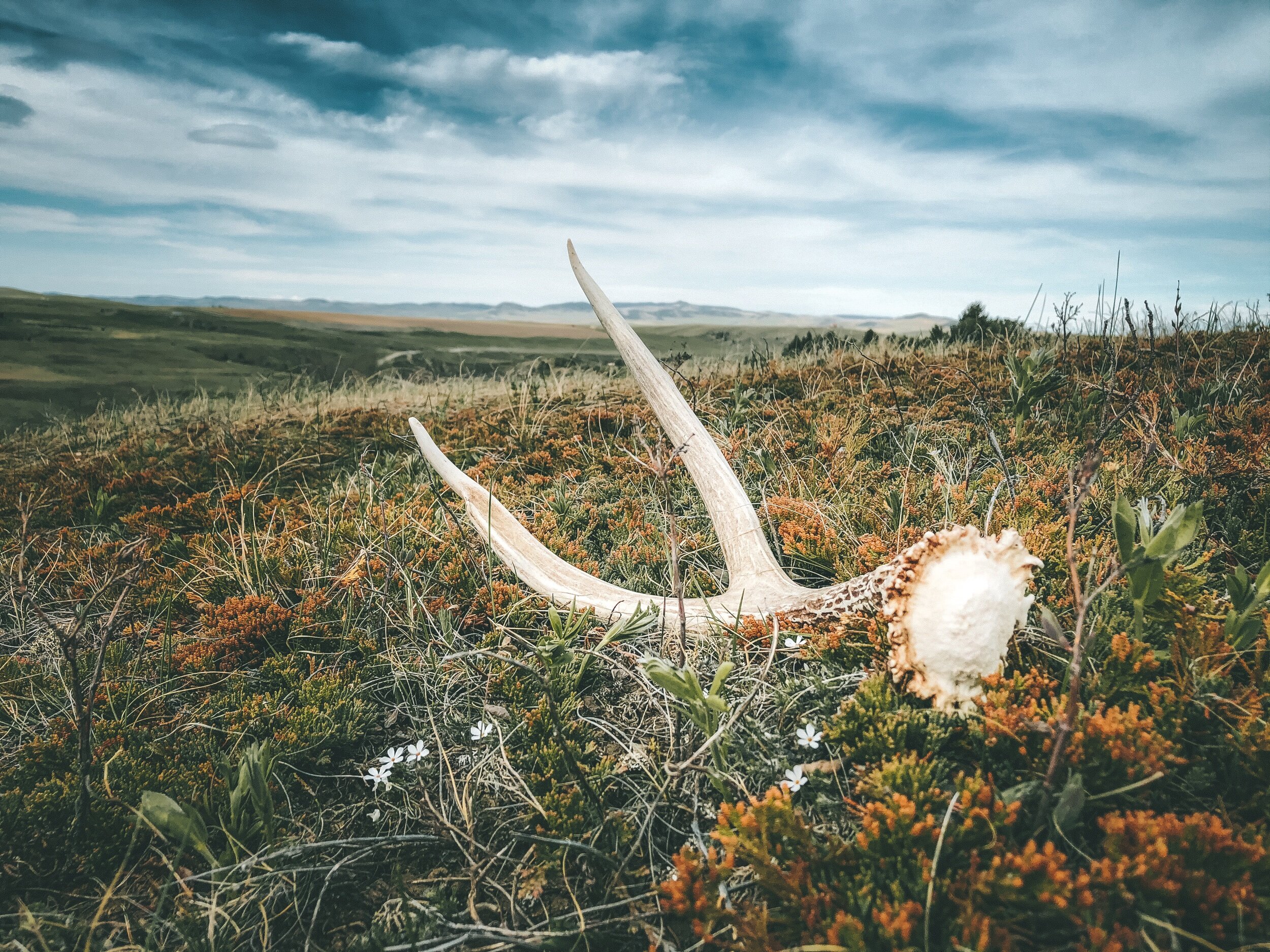Antler Information

There are quite a few people out there who don’t realize that the males of any deer species “naturally” shed their antlers! Not a single Mule Deer, Whitetail Deer or Elk have been harmed in any way to make my jewelry.
I’ve dedicated this page, to those of you who don’t know, in hopes to help educate you better. Here is some basic information on Antler Growth!
Antlers are extensions of an animal's skull found in members of the deer family. Antlers are true bone and are a single structure. Antlers are shed and regrown each year and function primarily as objects of sexual attraction and as weapons in fights between males for control of harems.
A Mule Deer Buck during ‘Velvet” stage.
Velvet antler
Each antler grows from an attachment point on the skull called a pedicle. While an antler is growing, it is covered with highly vascular skin called velvet, which supplies oxygen and nutrients to the growing bone. Growth of antlers typically begins in April in response to increasing day length. In fact, antler growth is one of the fastest known types of tissue growth in mammals, and a deer’s antlers can grow at a rate of ¼ inch per day.
Mule Deer Buck with '“Hard Antler”.
Hard Antler
By late summer, the antler begins to harden. Finally the blood vessels within the antler itself are filled and lose their ability to nourish the velvet, and it dries up and falls off. The velvet is typically totally removed in a day, and some of it may be eaten by the buck.
A “Shed” Mule Deer Antler.
Shed antler
In mid-late winter months, cells called osteoclasts de-mineralize the bone along an abscission line where the pedicle meets the antler.
This weakened attachment combined with the weight of the antler causes it to drop off or be cast. Although described as an abscission "line," the surface of the detached antler base is rough in texture. The resulting surface may be either flush with or extend beyond the burr or coronet.


